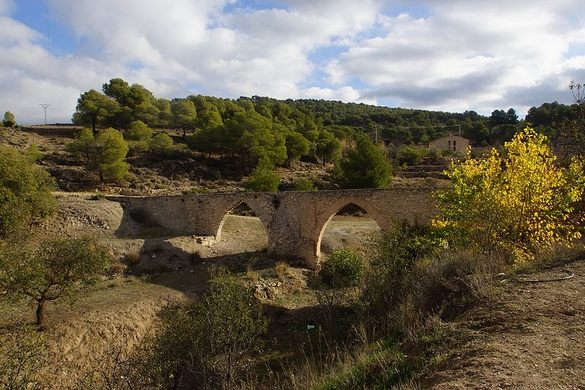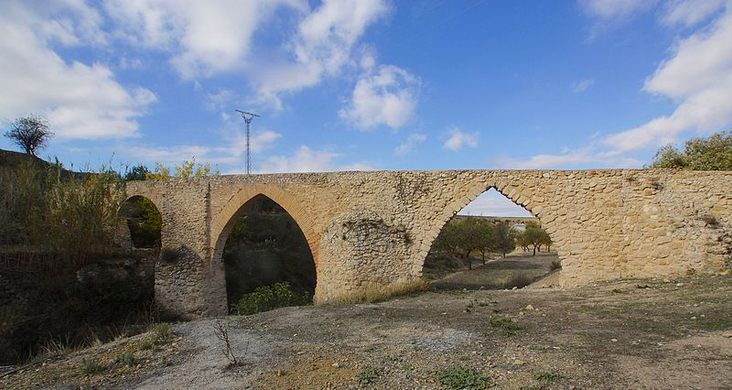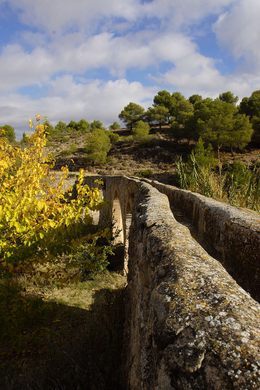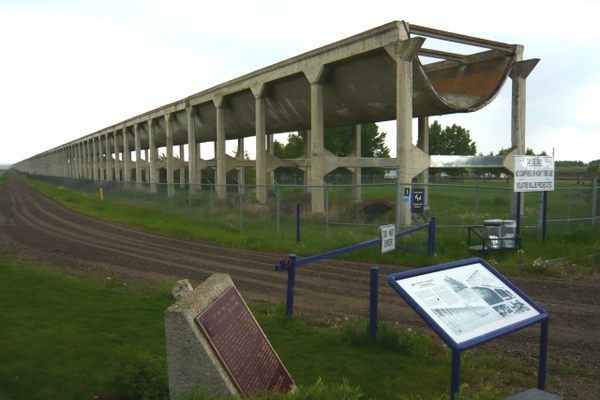Medieval Aqueduct of Biar
This 15th-century aqueduct with distinctive pointed arches was used for irrigation in the Vinalopó valley.
Spain is blessed with a good number of Roman aqueducts, but less well known are the medieval aqueducts that were generally built for irrigation. In the upper Vinalopó valley, some brilliant civil engineering was used to provide water to the arid part of the region purely by gravity. Crossing river valleys without pipes required the use of aqueducts, and this one in the town of Biar in Alicante is a fine surviving example.
The medieval aqueduct of Biar was built in 1490 and was designed by a renowned architect from Girona named Pere Comte, famed for his abilities in water engineering as well as some fine architecture in the greater Valencia region. Spanning the Rambla dels Molins (Molins Riverbed), the aqueduct has three arches, two of which are markedly pointed in the Gothic style, very unlike the rounded arches used on Roman aqueducts. The structure is also relatively narrow, indicating the particularly localized and limited use of the water it carried.
Picturesquely backdropped by Biar Castle, the 500-year-old aqueduct stands today as a reminder of the abilities of the Spanish engineers of the medieval period to undertake complex water projects, and is a beautiful piece of infrastructure in its own right.
Know Before You Go
The aqueduct is north of Biar. Take road CV-804 North, after a loop to the west, the road goes north again. While crossing a bridge, you can see the aqueduct to the east. You will see a sign on the next paved road to the right. Turn right and you will see a plaque on the right. Take that dirt road on the right. The aqueduct can be freely approached.


















Follow us on Twitter to get the latest on the world's hidden wonders.
Like us on Facebook to get the latest on the world's hidden wonders.
Follow us on Twitter Like us on Facebook